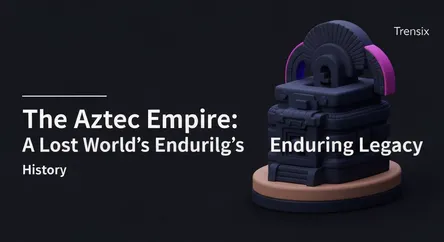History
The Aztec Empire: A Lost World's Enduring Legacy

Discover the Aztec Empire, a sophisticated Mesoamerican civilization known for its grand capital, complex society, and lasting cultural contributions.
What is it?
The Aztec Empire was a powerful Mesoamerican civilization that flourished in central Mexico from 1428 to 1521. It originated as a Triple Alliance of three city-states: Tenochtitlan, Texcoco, and Tlacopan. Over time, the Mexica of Tenochtitlan became the dominant power. At its zenith, the empire controlled a vast territory through military conquest and tribute, encompassing millions of people. Their capital, Tenochtitlan, built on an island in Lake Texcoco, was one of the largest and most advanced cities in the world at the time, featuring impressive pyramids, palaces, and causeways. The empire's society was highly stratified, with a ruling class of nobles and priests, a strong military, and a complex religious system that included human sacrifice. The civilization ultimately fell to Spanish conquistadors led by Hernán Cortés in 1521.
Why is it trending?
Interest in the Aztec Empire remains high due to ongoing archaeological discoveries at sites like the Templo Mayor in modern-day Mexico City, which continue to reveal secrets about their society. The Aztecs are recognized for their remarkable achievements in engineering, such as building aqueducts and creating artificial islands called chinampas for agriculture. Their complex social structures, including a court system and mandatory education for all children, are topics of scholarly discussion. Furthermore, the Aztec calendar and intricate art remain subjects of fascination. The story of their dramatic rise and fall, and their profound influence on Mexico's national identity—the Mexican flag's central emblem is drawn from an Aztec legend—ensure their continued relevance in historical and cultural studies.
How does it affect people?
The Aztec civilization has a profound and lasting impact on modern life, particularly in Mexico. Many Nahuatl (the Aztec language) words have been integrated into Spanish and English, such as "chocolate," "tomato," "avocado," and "coyote." Their agricultural innovations introduced the world to key crops like maize (corn), beans, and chilies, which are now global dietary staples. The descendants of the Aztecs continue to live in Mexico, preserving aspects of their culture and the Nahuatl language. The empire's legacy is visible in the art, cuisine, and traditions of the region, forming a crucial part of Mexico's rich cultural heritage.